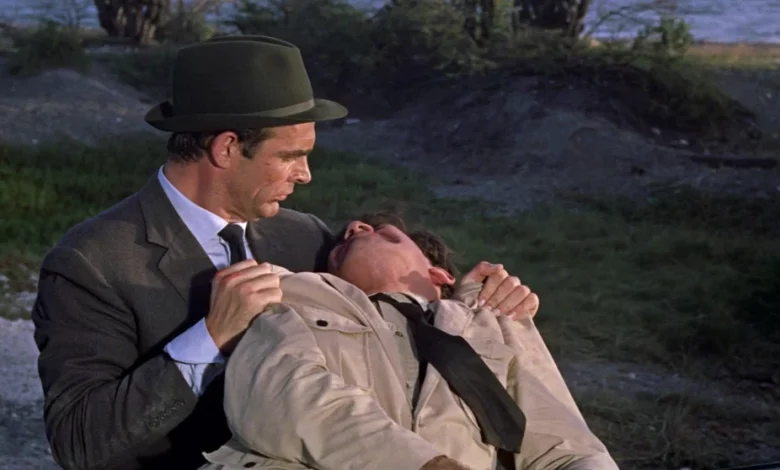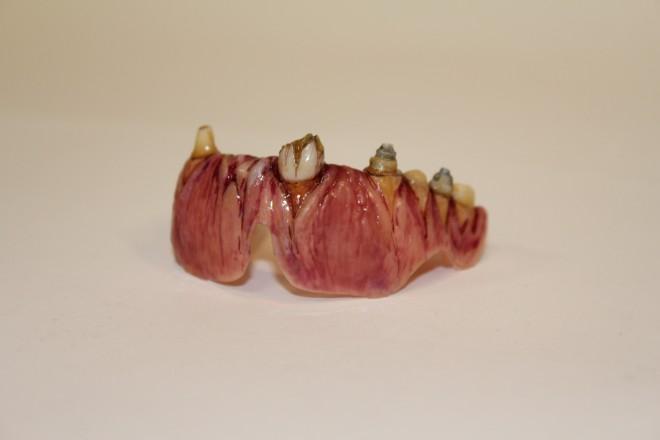Do Cyanide Capsules Work as Portrayed in Skyfall (2012) ?

The Cyanide Capsule Scene in Skyfall (2012)
The film’s villain, portrayed by Javier Bardem, seeks revenge on his agency but ends up disfigured after attempting suicide with a cyanide capsule. The author, a chemistry enthusiast, questions the accuracy of this portrayal, especially since cyanide is known to be a fast-acting and lethal poison. She explores the properties of hydrogen cyanide (HCN), a chemical mentioned in the movie, and highlights its corrosive nature when in liquid form. The author also discusses historical references to spies carrying suicide pills and the common use of sodium or potassium cyanide. Ultimately, she finds the movie’s depiction of hydrogen cyanide as a corrosive agent unrealistic, concluding that it would be highly improbable for it to melt someone’s face. The essay humorously highlights the challenges of balancing scientific accuracy with cinematic storytelling.

The Science Behind Cyanide Poisoning
Cyanide poisoning occurs when the body is deprived of oxygen due to the inability of blood cells to transport oxygen to the body’s tissues. This is caused by the inhibition of an enzyme called cytochrome c oxidase, which is essential to the process of cellular respiration. Cyanide causes cells to switch from aerobic to anaerobic respiration, resulting in the production of harmful lactic acid and eventually cellular death.
The symptoms of cyanide poisoning can include headache, nausea and vomiting, a rapid heart rate, and convulsions. Ingesting a lethal dose of cyanide can result in death within minutes.
Cyanide Capsules in Movies: Fiction vs. Reality
Although cyanide capsules have been a staple in spy movies for decades, the reality of their functionality is quite different from their depiction in movies. In reality, cyanide capsules are a highly toxic and dangerous substance that can have deadly consequences.
One of the most common misconceptions that stem from their portrayal in movies is the idea that cyanide capsules offer a quick, painless death. However, in real life, the effects of cyanide poisoning are far from painless, causing severe respiratory distress and convulsions before ultimately leading to death.
While the portrayal of cyanide capsules in movies may make them seem like an effortless, foolproof method of suicide, the reality is that it’s not as simple as swallowing a pill. The process of preparing and ingesting a cyanide capsule is incredibly dangerous, and the risks involved are high.
Overall, while cyanide capsules may be an iconic plot device in movies, it’s important to recognize the vast discrepancies between their portrayal in popular culture and their actual real-life function. It’s essential to be cautious while handling cyanide capsules, and to avoid their use except in the most extreme circumstances.

Understanding Cyanide Poisoning
Cyanide poisoning occurs when an individual ingests, inhales, or comes into contact with cyanide. The compound interferes with the cells’ ability to use oxygen, leading to a rapid decline in bodily functions and, in severe cases, death. Depending on the severity of the exposure, symptoms can begin within seconds or minutes.
Common effects of cyanide poisoning include:
- Headache
- Dizziness
- Nausea
- Vomiting
- Rapid breathing
- Rapid heart rate
- Confusion
- Seizures
Given the swiftness of these effects, it’s tempting to assume that cyanide capsules work instantly,.However, the reality is more complex.
Cyanide poisoning can be treated with specific antidotes, such as hydroxocobalamin or sodium thiosulfate, which can reverse the effects if administered quickly. Additionally, the toxicity of cyanide depends on several factors, such as the individual’s age, weight, and overall health.
It is important to note that the effects of cyanide poisoning can vary from person to person and depend on the dose and concentration of cyanide involved. As such, the portrayal of cyanide capsules in films should be taken with a grain of salt, as it may not reflect the reality of the situation.
Real-Life Cyanide Capsules: Facts and Functionality
Cyanide capsules have been a popular plot device in movies and literature, but they are not just a product of fiction. In reality, cyanide capsules have been used in various contexts throughout history. Here are some facts about real-life cyanide capsules:
- Cyanide capsules are small, usually pill-sized, containers filled with potassium cyanide, a poisonous substance that can cause death within minutes.
- They have been used by individuals for suicide, by soldiers as a way to prevent capture, and by governments for covert operations.
- In World War II, the Nazi regime distributed cyanide pills to its soldiers to ensure they would not be taken prisoner by enemy forces.
- Cyanide capsules have also been used by spies to avoid interrogation and to conceal vital information.

While the use of cyanide capsules is controversial and their effectiveness is debated, they remain a part of history and continue to be a source of fascination in popular culture.
Cyanide Capsule Functionality
Cyanide capsules work by releasing a lethal dose of potassium cyanide when ingested. Potassium cyanide is a highly toxic substance that prevents cells from using oxygen, leading to rapid cell death and ultimately, death of the individual. The release of cyanide can occur through various ways, including biting down on the capsule or crushing it between teeth. Cyanide capsules are often designed to be quick-acting and difficult to detect.
Due to their lethal nature, cyanide capsules are heavily regulated and are not commonly available for purchase. However, their existence and use in history underscore the serious consequences of their misuse.
Debunking Myths and Misconceptions
There are numerous myths and misconceptions surrounding cyanide capsules, perpetuated in movies and popular culture. Let’s explore and debunk some of the most common ones.
Myth 1: Cyanide capsules work instantly.
While it’s true that cyanide can work quickly, causing death within minutes, the effects are not instantaneous. Ingesting a cyanide capsule can take several minutes to take effect, depending on the dosage and individual factors. Additionally, some people may vomit or experience other symptoms before the cyanide can take full effect.
Myth 2: Cyanide capsules are painless.
Although cyanide can cause sedation and unconsciousness, it is not a pain-free death. Cyanide poisoning can cause respiratory distress, convulsions, and severe headaches. The level of pain experienced can vary from person to person and is influenced by factors such as the dosage and duration of exposure.
Myth 3: Cyanide capsules are undetectable.
While cyanide capsules may be difficult to detect after they have been ingested, there are ways to detect their presence beforehand. The smell of bitter almonds, a common symptom of cyanide poisoning, can give away the presence of a cyanide capsule. Additionally, modern forensic techniques can detect traces of cyanide in bodily fluids and tissues.
Myth 4: Cyanide capsules are used exclusively by spies and assassins.
While cyanide capsules have been used by covert operatives in the past, they are not exclusive to the world of espionage. Cyanide capsules have been used in a variety of historical and wartime contexts, including by soldiers and civilians seeking to avoid capture or torture.
By debunking these myths and misconceptions, we can gain a clearer understanding of the true functionality and effects of cyanide capsules. It’s important to separate fact from fiction when it comes to such a serious topic.
The Role of Cyanide Capsules in Spy Fiction
After a failed assassination attempt on James Bond, the henchman known as Jones, working under the employ of the SPECTRE operative Dr. No, was apprehended and ultimately outmatched by Bond. To evade capture and any potential interrogation by Bond, Jones asked for a cigarette, unbeknownst to Bond that it was laced with Cyanide. Tragically, Jones resorted to ingesting the poisonous substance, leading to his own demise. Subsequently, Bond brought the cyanide-infused cigarettes to Pleydell Smith, who remarked on their clever design.

Another notable use of cyanide capsules in movies is in the classic film Casablanca (1942). At the end of the movie, the character Major Strasser is shown to have committed suicide with a cyanide capsule after being captured by Rick Blaine and Louis Renault.
Cyanide capsules have also been portrayed in a more comical context, such as the scene in the movie Kingsman: The Secret Service (2014) where the protagonist uses a cyanide capsule disguised as a SIM card to fake his death.
The recurring use of cyanide capsules in spy fiction speaks to their significance in this genre. They represent a last resort for agents facing capture, a way to escape torture and avoid divulging important information. The portrayal of cyanide capsules in movies has helped to popularize this notion and has contributed to the cultural significance of these devices.
Instances of Cyanide’s Deadly Role in History
- During the Dieppe Raid in August 1942, one of the mission’s objectives was to assess the significance and operational capabilities of a German radar station located atop the cliffs east of the French town of Pourville. To accomplish this task, RAF Flight Sergeant Jack Nissenthall, a radar specialist, was assigned to the South Saskatchewan Regiment. His mission was to infiltrate the radar station and gather intelligence, accompanied by an 11-member unit from the Saskatchewans serving as his protectors. Nissenthall willingly undertook this perilous assignment, fully aware that, owing to the sensitive nature of his knowledge about Allied radar technology, his Saskatchewan unit had orders to eliminate him if capture seemed imminent. He also carried a cyanide pill as a last resort.
- In the aftermath of World War II, several prominent Nazis, including Heinrich Himmler, Philipp Bouhler, and Eva Braun, as well as Adolf Hitler, used lethal pills containing a cyanide salt solution to commit suicide. These acts of self-destruction were prompted by their implication in various events and plots related to the war.
- Serial killer Leonard Lake, arrested for possessing an unregistered handgun and a suppressor in 1985, resorted to suicide by consuming cyanide pills concealed within his clothing. He took this drastic step to prevent further investigations that could uncover his more serious crimes.
- In 1987, two North Korean agents resorted to biting into concealed ampoules containing cyanide hidden within the filter tips of cigarettes after their detention in Bahrain on suspicion of involvement in an airplane bombing. Tragically, one of the agents died as a result of this action.
- Throughout the Sri Lankan Civil War spanning from 1987 to 2009, members of the Tamil Tigers who acted as suicide bombers wore necklaces containing potassium cyanide. These necklaces served as a last resort; if captured by the Sri Lanka Army, they would bite into the tablet at the end of the necklace. Additionally, starting from 1976, nearly all Tamil Tigers from the LTTE carried suicide pills. This marked a significant contemporary and widespread use of potassium cyanide as a means of suicide, particularly among female operatives who often had a tablet adhered to their tooth.
- In 1977, Aleksandr Ogorodnik, a CIA operative operating within the USSR, was apprehended by the KGB. When offered the opportunity to write his confession, he insisted on using his pen, which had a concealed ampoule of lethal poison inside its cap. He bit down on the cap and succumbed to the poison almost instantly, according to the Russian agent who interrogated him.










One Comment